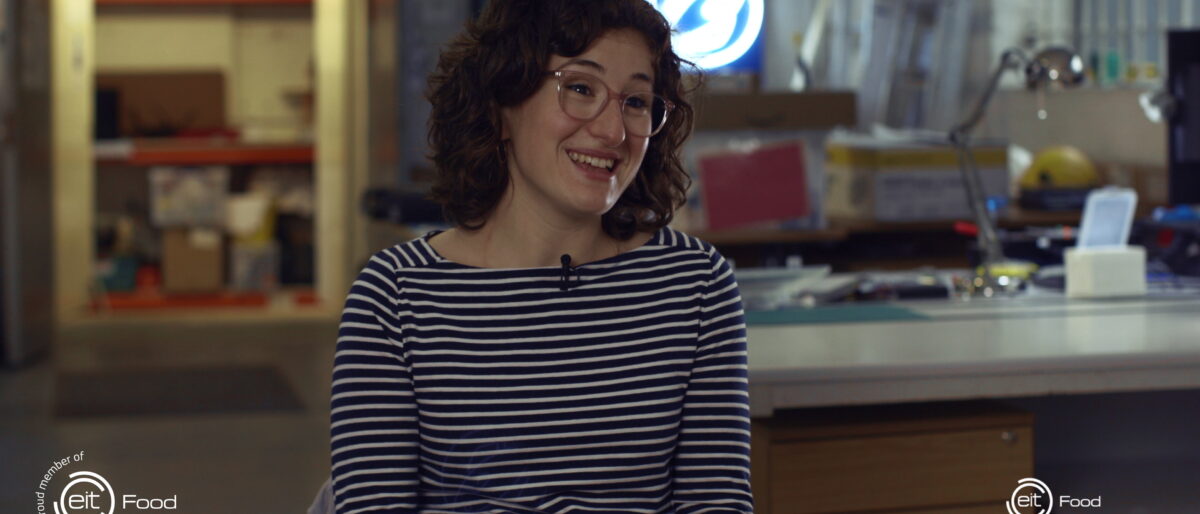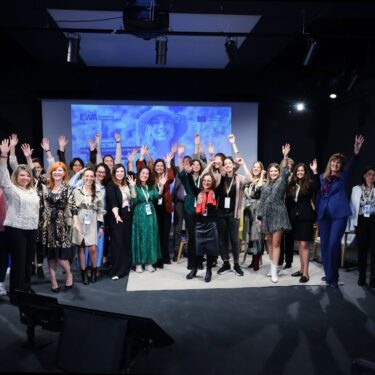
Explore a career as a mechanical engineer
In this blog, we deep-dive into a career as a mechanical engineer working in the precision fishing industry.
Our EIT Food North-West Day in the Life series is an educational resource aimed at young people and professionals who are interested in the agrifood job market. We profile a wide range of careers in the agrifood sector, interviewing professionals to find out what their job is like, why it is important, and how you could take up the profession.
In this blog edition, we explore a day in the life of a Mechanical Engineer!
You will learn:
- What a typical day is like as a mechanical engineer
- The main responsibilities of a mechanical engineer
- Why this industry matters to our wider food system
- How you can take up this career path

Meet Naomi Gould, a mechanical engineer at SafetyNet Technologies, a game-changing startup that is part of EIT Food’s Rising Food Stars Association. SafetyNet Technologies is disrupting the precision fishing industry by helping fisherman to catch the right fish and perform the right interventions to protect marine ecosystems. Naomi tells us what life is like working as an engineer, and how you can train to become one too.
What does a typical day as a mechanical engineer involve?
For Naomi, her job as a mechanical engineer involves creating and developing technologies for the precision fishing industry. This process involves multiple steps from ideation to design to product prototyping.
“Day to day I do a whole variety of tasks, ranging from brainstorming with colleagues, through to doing designs on paper, then I move onto my computer where I use Computer Aided Design to make 3D models.”
The products being designed by Naomi and her team must be built to a very advanced specification due to the complexity of their function and the unpredictable nature of the marine environment they will be used in. This means they perform lots of “testing to make sure the device is going to be resilient and robust” when it faces challenging conditions and pressure deep in the ocean. There is then an iterative process to bring the product to completion:
“The next thing I move onto is how might I manufacture the product. So that can go from prototyping, using 3D printers or laser cutting, then I might work with say a contract manufacturer, outsource the manufacture of our final parts for the products.”
One of the key benefits of being an engineer for Naomi is being involved in the creation of a new product from start to finish and being ‘hands-on’ with different tasks throughout the process.

Why is engineering an important industry to work in? What are the biggest challenges in the sector?
Engineering is essential to creating the solutions to build a better world that is more sustainable, as Naomi explains:
“It was really important to me that my work contributes to sustainability. Within the world we’ve got so many problems with climate change, food resources and resource problems in general. Being an engineer, I feel like I’m in a really powerful position to make a positive change.”
Engineers will be at the forefront of technological changes to transform our economy into a more sustainable one. One of the main challenges is the scale of change required, with every sector needing to adapt and create sustainable solutions. This can involve monumental changes to infrastructure and the existing ways of doing things. However, engineers like Naomi are given the flexibility and opportunity to design and implement exciting innovations that will make a positive difference to the sector they work in.

What types of projects does a mechanical engineer get involved in? For example, what are you working on at the moment?
At SafetyNet Technologies, Naomi has been working on the company’s flagship product, ‘Pisces’, which is a bycatch reduction light. Naomi explains its purpose:
“The idea is fisherman will attach a set of these lights to their nets and it enables selectivity within the nets. You have your target catch which is the fish you want within the nets, but often you can catch fish that you aren’t actually targeting; we call that bycatch. The idea of our lights is that you can programme your nets to either attract the right fish or repel the wrong fish.”
This innovation could be a vital tool to improve the animal welfare and environmental impacts of commercial fishing, which is currently catching fish from the ocean at an unsustainable rate. Naomi’s efforts to finetune this product will help lead to fewer fish being inadvertently caught in nets, thereby improving the health of the overall ocean ecosystem.

How can I pursue a career as a mechanical engineer ? What pathways are there into your role?
Naomi explains, “my path to being a mechanical engineer was a winding path like most people’s careers.” There are numerous university degrees available in engineering, and Naomi chose to study mechanical engineering because at school she loved design and technology and making things. Once she had finished her degree, Naomi wanted her job to involve conservation as it was one of her passions:
“I’m really passionate about the ocean and ocean conservation so I always want my work to contribute to something I think is worthwhile, especially sustainability.”
Engineering allows you to combine your education and practical skills to any area you are passionate about. Naomi also stresses that her academic route is not the only way:
“There are many other routes as well. Certainly the best thing to do would be to reach out to local organisations that you might be aware of. That’s really standard in this field and there are lots of opportunities.”

What do you enjoy most about being a mechanical engineer?
For Naomi, “the best parts of my job are probably designing and making. I love creating things from raw materials- it’s really exciting. I also love problem solving with my colleagues to overcome a challenge.”
Naomi sums up being a mechanical engineer in three words:
Interesting, diverse, challenging.

Receive tips and guidance on food and farming careers
About EIT Food’s Day in the series
EIT Food’s Day in the Life Series is a video series that explores the variety of careers that our agrifood system has to offer. The aim of the series is to raise awareness of the range of high-skilled and highly rewarding jobs that the food and farming sector has to offer and inspire younger generations to consider one of these careers for themselves.
More blog posts by EIT Food West

Making f!sh from microalgae and mushroom roots








